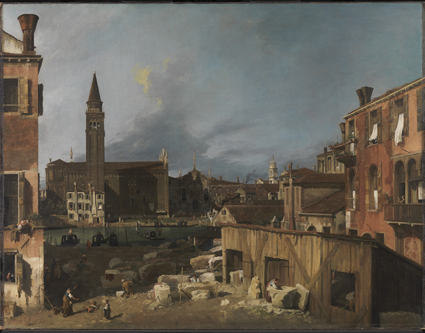Canaletto and His Rivals at the National Gallery.
Giovanni Antonio Canal, otherwise known as Canaletto little canal was the leading painter of views of Venice in the eighteenth century. Canaletto established the veduta, or topographical view, both as one of the principal genres of Venetian painting and as one of the citys prime exports. As Venice continued its long but sure decline, from great imperial power to tourist hub and floating museum, Canaletto profited. His principal clients were English milordi, wealthy young aristocrats despatched to continental Europe to enjoy the various pleasures of the Grand Tour. If Paris was the city of sophistication and Rome the city of the mind, Venice was the city of pleasure: a vast stage-set for regattas and festivals, masqued balls and every other form of nocturnal revelry.
Canaletto painted pictures that the English milords could take home with them, the portable souvenirs on which they could hang their precious memories of youth and freedom. He painted the exotic honey-coloured palaces of the Grand Canal, with their facades of medieval Gothic touched by the flamboyance and colour of Byzantium, all decorously crumbling into the sea; he painted brightly dressed gondoliers ferrying their well-heeled passengers across emerald-green waters stirred by the slightest of swells; he painted the bell tower of St Marks and the bright and brilliant dome of the Salute against the wind-tossed skies.
Canaletto was following in the footsteps of Luca Carlevarijs, who had been the first Venetian vedutista of note, but he surpassed his forerunner in every way: sureness of composition, lightness of touch but above all in his handling of the ever-changing light of Italys Adriatic coastline. As his fellow-painter and connoisseur Alessandro Marchesini remarked in 1725, Antonio Canale ... astounds everyone in this city who sees his work, which is like that...


